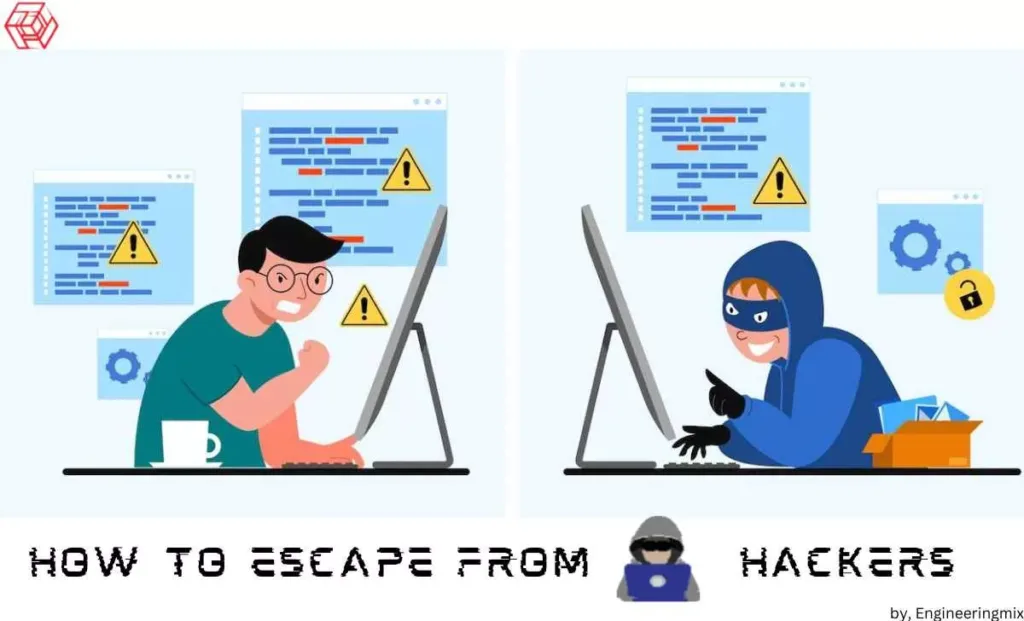Ever wondered how password hacking, or 'cracking' works? It's like attempting to crack a code to gain unauthorized access to a system or network. Cracking techniques can involve anything from simply guessing passwords to more sophisticated methods like using software and tools specifically designed to test multiple character combinations. In some cases, hackers leverage pre-computed lists of commonly used passwords or even employ a dictionary-based approach. Let's delve deeper into the types of software tools employed in password hacking.
Hackers can sometimes trick users into giving their passwords by using phishing or social engineering techniques. Furthermore, hackers can employ more complex techniques such as brute-force attacks, in which they attempt every conceivable combination of characters, or rainbow table attacks, in which they use precomputed databases of hashed passwords.
It’s important to note that choosing strong, unique passwords and enabling two-factor authentication may significantly lower the likelihood of your password being compromised. Furthermore, employing a password manager can assist you in creating and storing secure, unique passwords for all of your accounts.
CONTENTS
What is a Data Breach?
Unauthorized access to or exposure to private, sensitive, or otherwise protected data constitutes a data breach. A number of things, including hacking, phishing, social engineering, or even unintentional employee data management, might cause this. Personal information, financial data, trade secrets, and other sensitive data may be lost or stolen as a result of a data breach.
Any firm, regardless of size or sector, may experience a data breach. Both the impacted company and the people whose data was exposed may suffer major repercussions as a result. A data breach may result in monetary loss, legal obligations, and reputational harm for the firm. A data breach may cause identity theft, financial loss, and other types of harm to persons.
Let's Explore a Real-Life Example:
Equifax revealed in 2017 that there had been a data breach impacting 143 million American consumers. Hackers broke into Equifax’s computers and stole sensitive personal information such as Social Security numbers, birth dates, addresses, and driver’s license numbers. Multiple class-action lawsuits, governmental fines, and the resignation of Equifax’s CEO followed the event.
In 2018, a data breach exposed the personal information of millions of Facebook users. A third-party company, Cambridge Analytica, acquired the data and exploited it for targeted political advertising. Due to the event, Facebook faced intense public outrage, which prompted many investigations and fines.
A data breach happened with the well-known video conferencing software Zoom in 2020. Hackers got the personal information of millions of Zoom users after gaining illegal access to the company’s database. Email addresses, meeting link addresses, and unique meeting ID numbers were among the information that had been taken. Through the use of this information, unauthorized parties would be permitted to enter private meetings and potentially watch or listen in on sensitive material being discussed.
The Marriott International hotel group disclosed a data breach in 2021 that may have compromised up to 500 million visitors’ personal data. The perpetrator of the assault was identified as a Chinese cyber espionage cell that had gained access to the company’s networks by taking advantage of a flaw in the software that powered Marriott’s Starwood reservation system. Names, addresses, phone numbers, email addresses, passport numbers, and other sensitive data were among the stolen data.
Looking for more? If you're interested in artificial intelligence, why not investigate How to Use ChatGPT by Openai: A Beginners Step-by-Step Guide?
How to Stored Passwords
Plaintext passwords should never be retained. Instead, before storing them, they should be hashed and salted.
The method of taking a plaintext password and applying a mathematical function (the “hash function”) to it to generate a fixed-length string of characters is known as hashing (the “hash value”). The same input will always provide the same hash value, but even little changes to the input will yield a significantly different hash result.
Salting is the technique of adding a random string of characters (the “salt”) to the plaintext password before hashing it. The salt is subsequently recorded in the database with the hash value.
Once a user enters the password, the system obtains the salt from the database, applies it to the password input, and hashes the result. The newly-hashed password is then compared to the previously stored hash value by the system. If they match, the password entered is accurate.
Because the salt guarantees that each password hash is unique, even if numerous users have the same password, this technique makes it more difficult for an attacker who acquires access to the database to quickly break the hashed passwords using precomputed tables (rainbow tables).
It is also recommended to employ a computationally costly hashing algorithm, such as bcrypt or scrypt, which is meant to slow down the hashing process, making it more difficult for an attacker to guess the password via a brute force assault.
Hashing Algorithm
Wondering how a hashing algorithm works? Consider it as a digital code maker. It takes an input (or 'message') and transforms it into a fixed-length string of characters, known as the 'hash value'. Here's the fascinating part - even a small tweak to the input can result in a dramatically different hash value. But the same input will always give you the same hash value - a unique digital fingerprint if you will. Let's look at a real-world example to better understand this complex but fascinating process.
Example:
Let’s generate a hash value for the input message “Hello World!” to use the SHA-256 hashing algorithm.
The hash value, as a result, would be:
"7f83b1657ff1fc53b92dc18148a1d65dfc2d4b1fa3d677284addd200126d9069"
Note: Hashing algorithms are often implemented in computer security for password storage and encryption.
Hashcat
Hashcat is a strong password recovery tool that uses several techniques to crack hashed passwords. It is a free and open-source program that is available for Windows, Linux, and macOS. Hashcat can decrypt password hashes used by Windows and Linux operating systems, as well as prominent online sites such as Facebook, LinkedIn, and Twitter. It supports a wide range of hash algorithms, such as MD5, SHA-1, SHA-256, and others.
Hashcat is capable of cracking hashes using a variety of methods, such as dictionary attacks, brute-force assaults, and rule-based attacks. While brute-force attacks entail trying every conceivable character combination, dictionary attacks use a pre-generated list of words and phrases as potential passwords. Rule-based attacks, which create password candidates using a set of criteria, are particularly efficient in breaking complicated passwords.
Hashcat may also be used to carry out a “mask attack,” a type of weak password in which the password is specified using a pattern. As just a result, the tool may have to consider fewer choices overall.
Hashcat is a command-line tool, therefore using it effectively requires some command-line experience. But it also has a more user-friendly graphical user interface (GUI) version called oclHashcat.
Hashcat is a strong tool that ought to only be employed by authorized personnel for legal tasks like password recovery and penetration testing. It’s critical to use Hashcat sensibly and in accordance with all relevant rules and legislation.
How to Escape from Hackers
So, what can you do to fight back against the hackers? Here's a cheat sheet:
- Use a security software suite that includes antivirus, anti-malware, and a firewall. Make sure to keep these programs updated and run regular scans to detect and remove any malware on your device.
- Keep your software, operating system, and apps updated. Many updates include security patches that address known vulnerabilities and protect against new threats.
- Use strong and unique passwords for all your accounts and consider using a password manager to generate and store them.
- Be cautious when using public Wi-Fi networks. Avoid accessing sensitive information or making financial transactions while connected to a public network.
- Use a VPN to encrypt your internet connection and protect your data from hackers.
- Be mindful of your online presence and be selective about the personal information you share on social media and other public platforms.
- Use multi-factor authentication (MFA) for all your accounts to add an extra layer of security.
- Regularly backup important data and files to protect them from ransomeware attacks and other data breaches
- Knowledge is power: Keep up with the latest hacking techniques and cyber threats. Check out resources such as the annual Verizon Data Breach Investigations Report for trends and statistics.
- Be careful when clicking on links, opening attachments or giving personal information. Scammers are becoming more sophisticated and their tactics more convincing, so be extra vigilant and be suspicious of unsolicited emails or messages.
Remember, being proactive is your best defense against hackers and cybercriminals in 2023 and beyond. By staying informed, and continuously adapting your security practices, you can stay one step ahead. It’s a digital game of cat and mouse, but rest assured, armed with the right knowledge, you hold the power. Let's stand firm in the face of these ever-evolving cyber threats.



